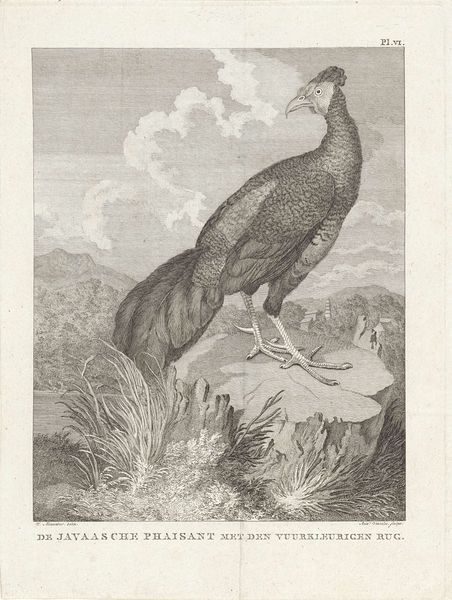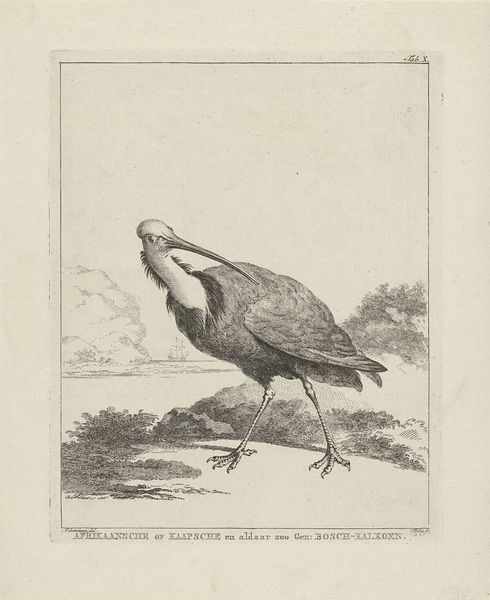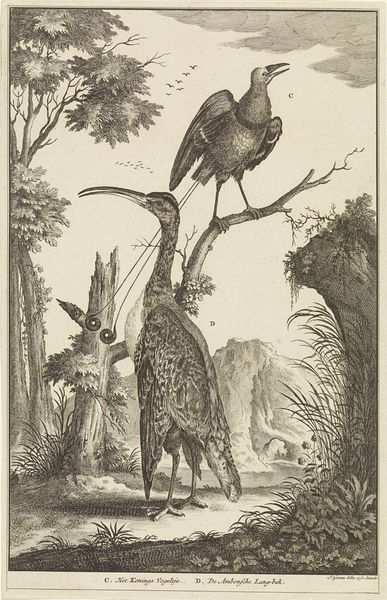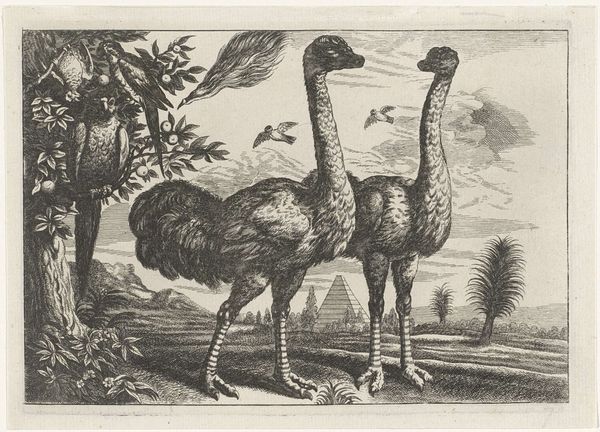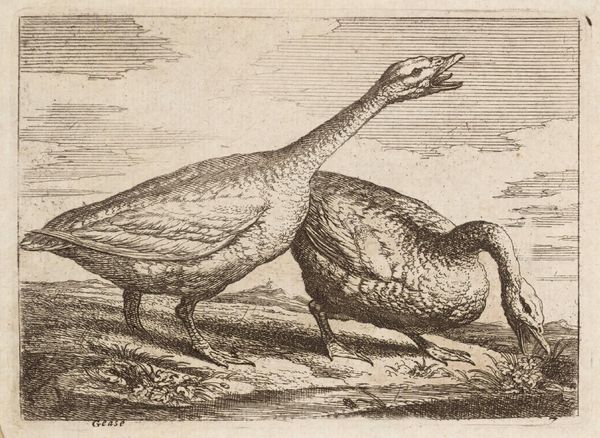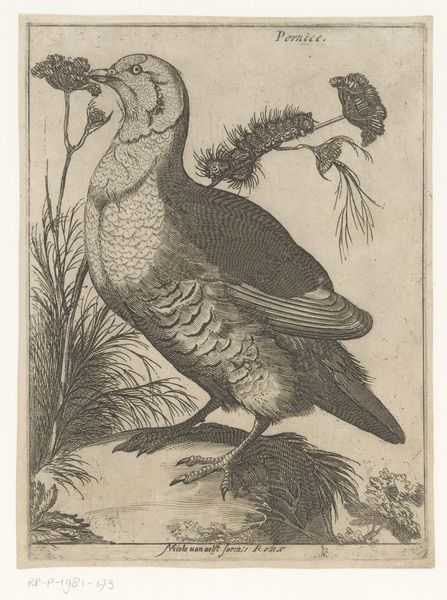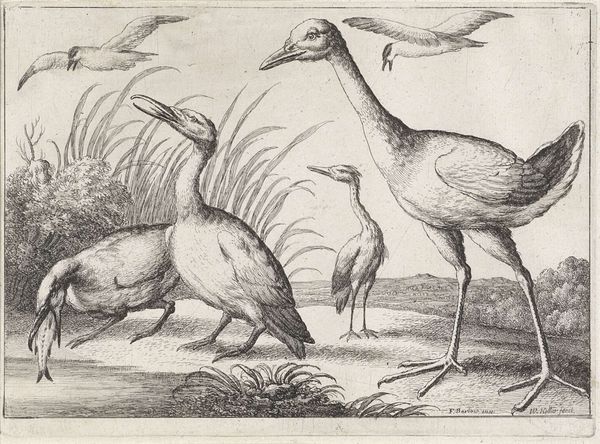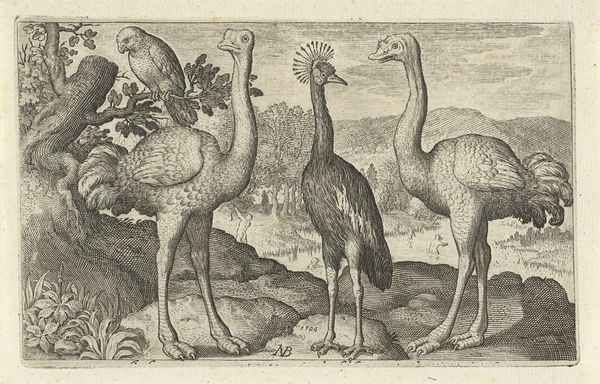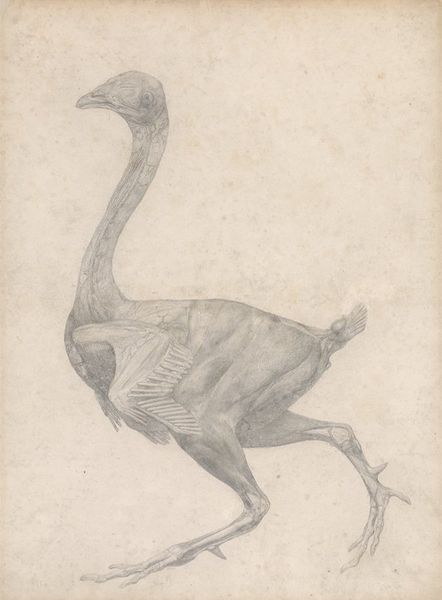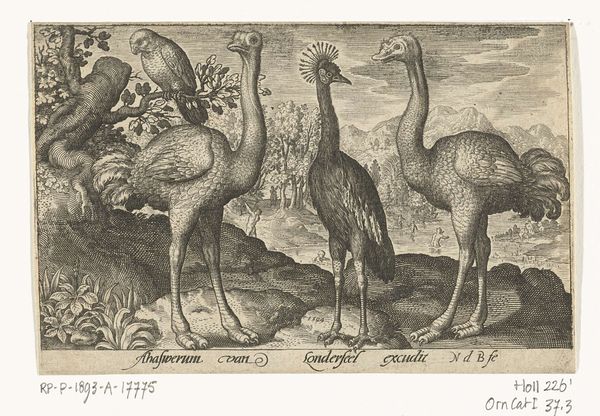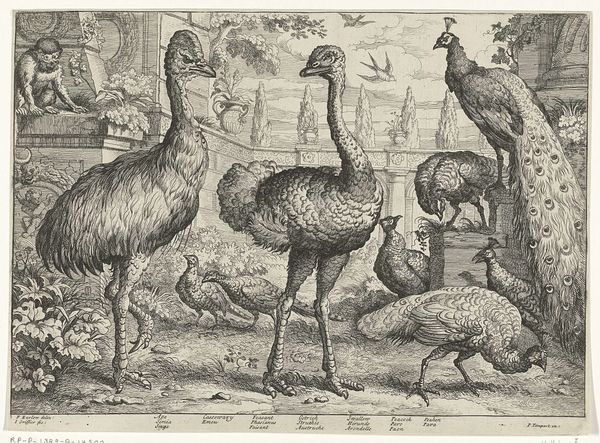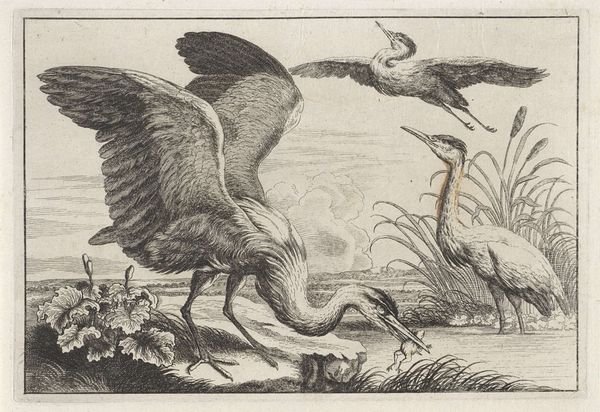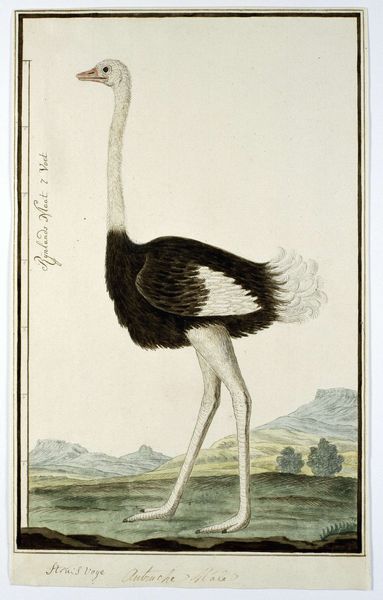
Casuaris, meegebracht door Willem Jacobsz. uit Oost-Indië en geschonken aan prins Maurits, 1614 c. 1614 - 1615
0:00
0:00
print, engraving
#
baroque
#
animal
# print
#
landscape
#
engraving
Dimensions: height 307 mm, width 206 mm
Copyright: Rijks Museum: Open Domain
Curator: Here we have an engraving by Crispijn van den Queborn, created around 1614 or 1615. The piece is called "Casuaris, meegebracht door Willem Jacobsz. uit Oost-Indië en geschonken aan prins Maurits," meaning a cassowary brought from the East Indies. It's currently housed here at the Rijksmuseum. Editor: It's imposing! The textures are incredible, achieved just with lines. The artist has clearly focused on depicting this "exotic" animal for a European audience. Curator: Exactly. The material choices reflect its place in Dutch society. It's an engraving, making it reproducible, part of a visual culture tied to trade and colonial expansion. It embodies the material reality of Dutch exploration in the East Indies. Editor: And the cassowary itself becomes a kind of material trophy, an exotic acquisition that speaks to power and control over global resources. Look how prominent it is, presented almost as a symbol. Curator: The animal itself is more than just an exotic curio. It becomes a signifier in the ongoing discourse of Dutch identity formation within the broader narrative of global exploration and colonization. The cassowary transforms from an animal into an intersection of politics, science, and the shaping of self and 'other'. How might we see the "gift" to Prince Maurits reflected through our present engagement with the global effects of climate change and colonization? Editor: The detailed rendering definitely reflects a growing interest in scientific observation. But let's also note the process: Queborn painstakingly used lines to convey texture, volume. It's craft meeting new-world exploration, documenting the commodification of nature. How was this plate etched, how many prints made, and by whom? These all form an unspoken narrative about the circulation of images and capital at the time. Curator: The print really opens a conversation around power dynamics. It's not just a picture of a bird; it's a picture of an era grappling with its burgeoning colonial power. This specific object raises necessary issues surrounding representation, access, and responsibility. Editor: Absolutely, this piece really highlights the connections between materiality, production, and broader social and historical frameworks. I think examining art from this angle allows us to better understand its full context. Curator: I agree entirely, together these insights help provide a more thorough understanding about the many levels where the significance of objects such as these may reveal cultural influence, material conditions, and shifting relations.
Comments
No comments
Be the first to comment and join the conversation on the ultimate creative platform.
